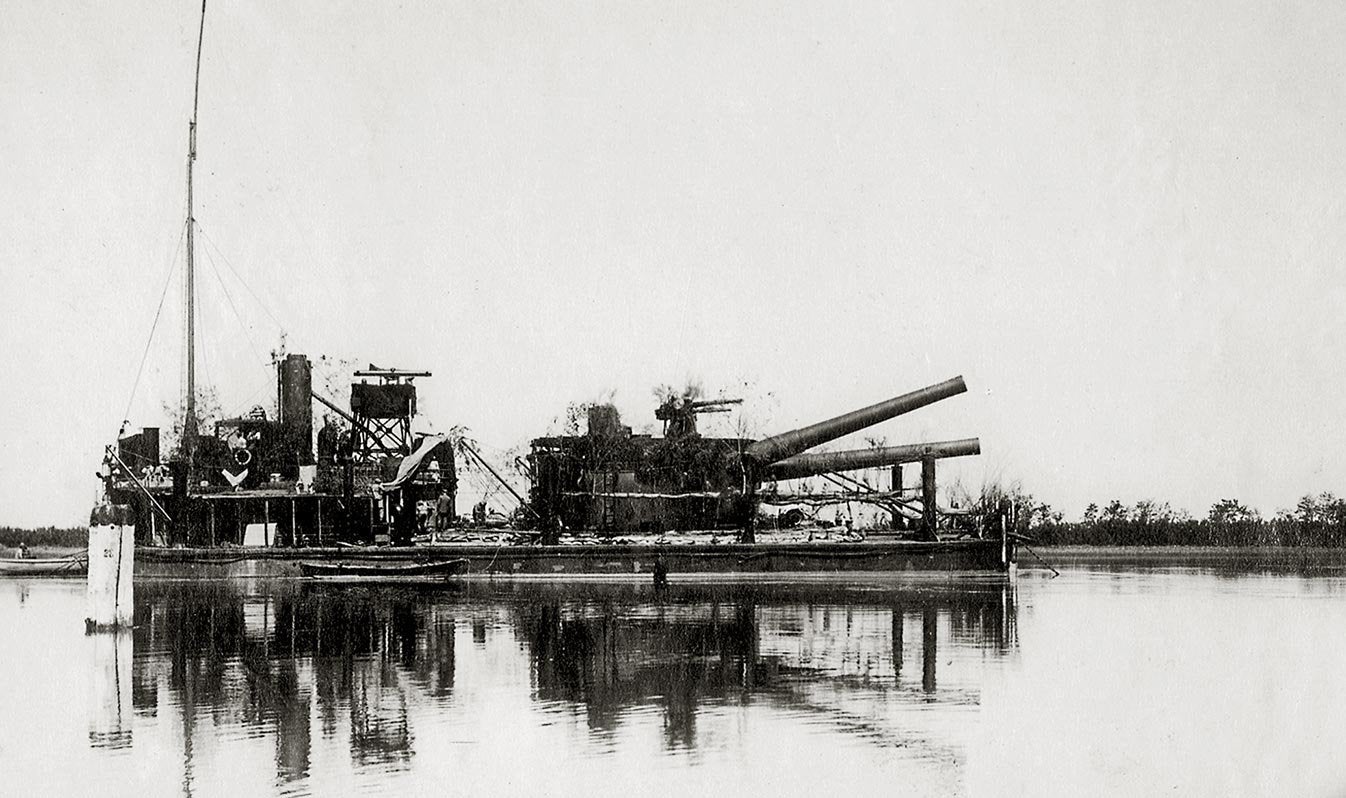Alfredo Cappellini
Alfredo Cappellini was built when Cannone navali da 381/40 guns from the Francesco Caracciolo-class battleships became available after their construction was suspended in 1916. Her guns were built by Ansaldo-Schneider and originally destined for the Francesco Morosini. Converted from the floating crane GA53, she displaced 1,452 long tons (1,475 t), with a length between perpendiculars of 36 meters (118 ft 1 in), a beam of 18 meters (59 ft 1 in) and a draft of 2.4 meters (7 ft 10 in). The ship was powered by one 265-indicated-horsepower (198 kW) vertical double-expansion steam engine. On sea trials the ship reached a maximum speed of 3.76 knots (7.0 km/h; 4.3 mph), but her maximum speed in regular service was about 3.5 knots (6.5 km/h; 4.0 mph).
Her hull and gun turret were unarmored, but she was protected by two anti-torpedo nets. Her main guns could elevate 20° and her turret could traverse 30° to either side. They fired an 884 kg (1,949 lb) armor-piercing shell at a muzzle velocity of 700 m/s (2,297 ft/s) to a range of 27,300 m (89,567 ft) at maximum elevation.
Alfredo Cappellini was launched in 1915, even before the battleships were officially suspended, by the Orlando Shipyard, in Livorno, completed on 24 April 1917 and commissioned four days later. Her first action came during the Eleventh Battle of the Isonzo in August 1917. She, in company with the Italian monitor Faà di Bruno and the British monitors HMS Earl of Peterborough and HMS Sir Thomas Picton, bombarded Austrian positions with little noticeable effect. She was wrecked on 16 November 1917 off Ancona.



